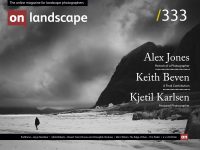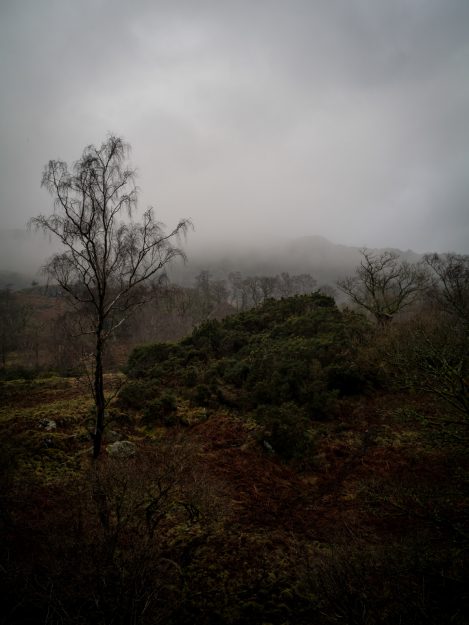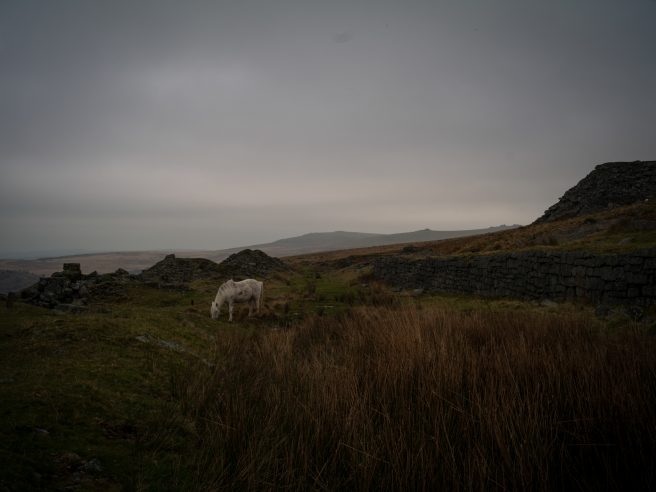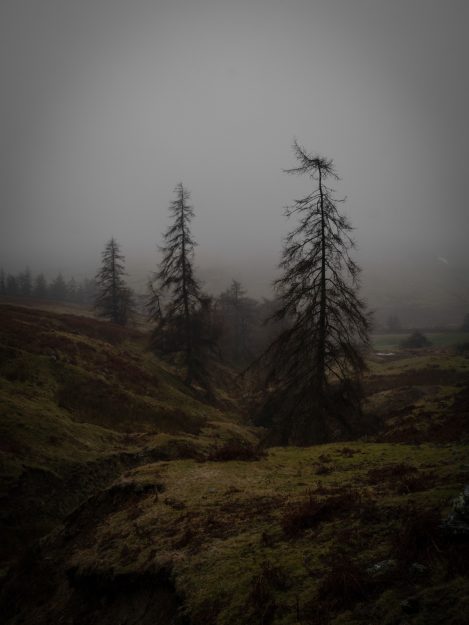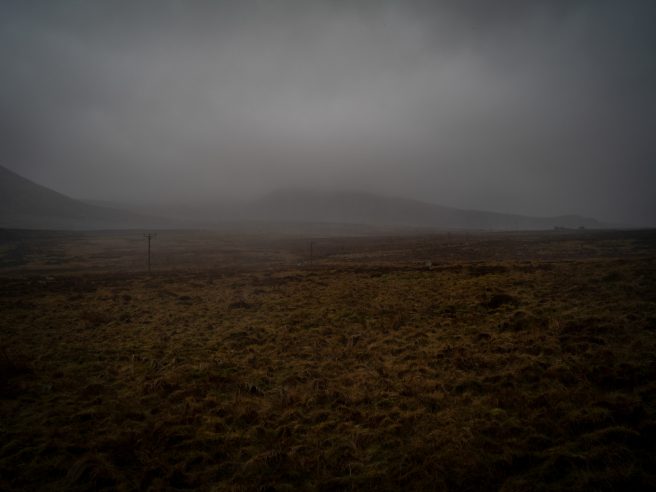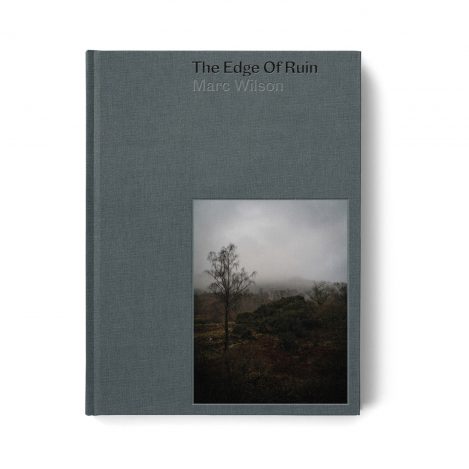Kickstarter Book Publishing Campaign

Tim Parkin
Tim Parkin is a British landscape photographer, writer, and editor best known as the co-founder of On Landscape magazine, where he explores the art and practice of photographing the natural world. His work is thoughtful and carefully crafted, often focusing on subtle details and quiet moments in the landscape rather than dramatic vistas. Alongside his photography and writing, he co-founded the Natural Landscape Photography Awards, serves as a judge for other international competitions. Through all these projects, Parkin has become a respected and influential voice in contemporary landscape photography.
We interviewed Marc Wilson at the Royal Armouries way back in 2013 when he was out promoting his Last Stand book on the relics of wars. He's currently promoting a Kickstarter campaign to help in the publication a new and predominantly landscape project about the relics of our industrial past. We asked him a few questions about the project.
Can you give us a short summary of how you found yourself on the verge of going to print with this new book and what it’s about.
Even before I made The Last Stand (2010-2014) during much of the first decade of this century, I was travelling throughout the UK, making inroads into various projects that were never completed for various reasons.
Above all my not being satisfied with them. These covered topics such as tourism, leisure and perhaps not surprisingly, give the landscapes I was finding myself in, industry.
Do you see The Edge of Ruin as a conceptual continuation or as a new chapter in your long-term documentary narrative?
For me it is very much a continuation of one of the two strands of work that I make - which are both connected of course. My long term projects have taken the form of either more overtly Documentary work - such as ‘A Wounded Landscape, bearing witness to the Holocaust’ and ‘The Land is Yellow, the Sky is Blue’ and my more topographic, but still subject based, work, ‘The Last Stand’ and ‘Remnants’. This new work, ‘The Edge of Ruin’ ‘fits’ more into the topographic / survey strand of my work. So whilst on the face of it the landscape itself has become the subject, I view it very much as object as well as subject, much as I did the man made fortifications in The Last Stand. I work very much on each subject I approach on an individual level, not working to any pre-determined formula, either in terms of the visual or the working method.
So for each new body of work, alongside initial subject research is a period of visual research where I will visit locations and find the best working method in terms of both what is of interest and my approach, feeling, light, weather. So I can then take this visual methodology into each location with me, still though allowing for the locations and what I discover there to determine the final photograph.
What drew you specifically to the industrial landscape and what kind of story do you think these sites are still telling today?
For me the point of interest here is the created landscape, formed by both nature and man, borne out of industry and the search for power and wealth. So what you find at these places is something that is at the same time both natural and artifice. What I have avoided is making work about the remaining edifices, the man made buildings. Whether these stand, preserved for heritage, or crumble into the landscape, what I soon found I wanted to do was look beyond these and onto the physical landscape itself, much of which is as much as an artifice as the buildings.
What I found whilst making the work also is that these sites became for me a marker, not just of the past but a likely future if we continue on our current path, in terms of our disdain for the natural world around us.
Many artists incorporate the physical act of walking and exploration of terrain (both internal and external) in their work. Did this process become part of your project and influence the emotional tone of your images?
Whilst not visualised in the work, the act of having to walk in many cases long distances to these sites, certainly played its part in forming the imagery for this work. Both in literal visual sense but also in the mood it led me into once I had arrived to make work. I found I was never simply waiting to arrive at my destination but the whole journey there became the lead up to the photograph, to my understanding of the land I was walking into, and then through.
How has your experience of book creation (design and commission) developed since your original publications?
With each new book I hope I learn not simply more about the production process, through collaboration with designers, copy editors, etc, but more importantly how the books are viewed and read by the audience. Then I take those thoughts into my next book and try focus the design to answer those questions.
Questions such as size, cover material, paper choice, placement of text, etc. They all play such an important role in the overall ‘feel’ of the book, which is different every time depending on the subject matter. These days the costs of production have increased so much since I first self published
The Last Stand in 2019 that many of these choices have to be made within a budget - both in terms of the funds available to print (what I can raise on the Kickstarter) and balancing the cost of the book for the buyer.
I notice you’ve included mentoring rewards in your Kickstarter campaign. Is this something you’ve done before and is it something you’d like to develop?
I’ve done lots of teaching over the last 20 years, both in semester long modules and visiting lectures and tutorials. So for me starting mentoring a few years ago was a natural extension of that. I really enjoy the process as it allows you to work with an individual on long term projects, giving them all the help they are looking for both in terms of a specific series they are working on but also, more long term with their overall photographic practice. These can work both in person and online so which is great.
Currently for example I am working with one photographer in The Netherlands online and one in my home city of Bath in person.
Part of the Kickstarter process inevitably creates a connection between an artist and their audience. I’ve seen you making these connections before in your previous developments. How important is this to you and what do you see as the advantages and disadvantages of either a standoffish approach to an overly familiar one?
It’s important to me. I enjoy that connection with my audience. I don’t feel the need to create an ‘aloof’ aura, rather preferring to let the work set itself apart, if that makes sense. It is also the element of my appreciating the support for my practice that people give me. Obviously people buy my books and prints because they choose to for the subject, but I do feel there is an element of their feeling that at the same time they are ‘supporting’ me and I really like that. So the connections I try to make and foster are a part of that. It’s also how I like to be. The way I make and present my work is very much a reflection of myself so whilst I can see the potential advantage to setting yourself up on a pedestal, it’s just not for me.
Tell me about a couple of the most important images to you in the project.
I’ve never found it easy choosing any single image over others in my work. Some I can later on, as I discover the impact of the work on its audience more.
For now, there was a location in North Wales that was certainly the wildest conditions I have made work in. Not the coldest as I have worked in minus 22 in Ukraine, but wind so strong I had to brace myself before each small press of the shutter and so much horizontal rain, that I had to really work quickly as soon as I brought the camera out of my bag to my eye, knowing exactly where my frame needed to be, and back into the bag again. It was wild but I enjoyed it.
Luckily it was a location not too far from my car so I returned to dry off, found warmth in a cafe with best beans on toast I think I’ve ever had, and then walked back out to the location to make more work from a different perspective.
Were there any surprising discoveries whilst researching or exploring the landscape for this book?
I found how alone you can feel very quickly here in the UK. The time of year and weather I was purposefully walking into helped of course but I walked to and returned from the 60 plus locations, almost always without seeing another living soul. Sheep, horses, birds of prey yes but so few people. But this feeling only helped me in making the images I wanted to, allowing me to concentrate fully on the subject in front of me, my gaze not diverted by others, my concentration fully on each step I made and the history unfolding before me.
You can find out more about the project, and hopefully help raise money for it's publication, at its Kickstarter campaign.

